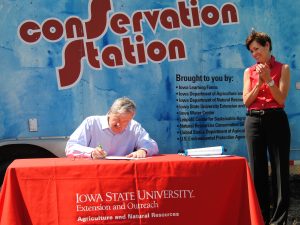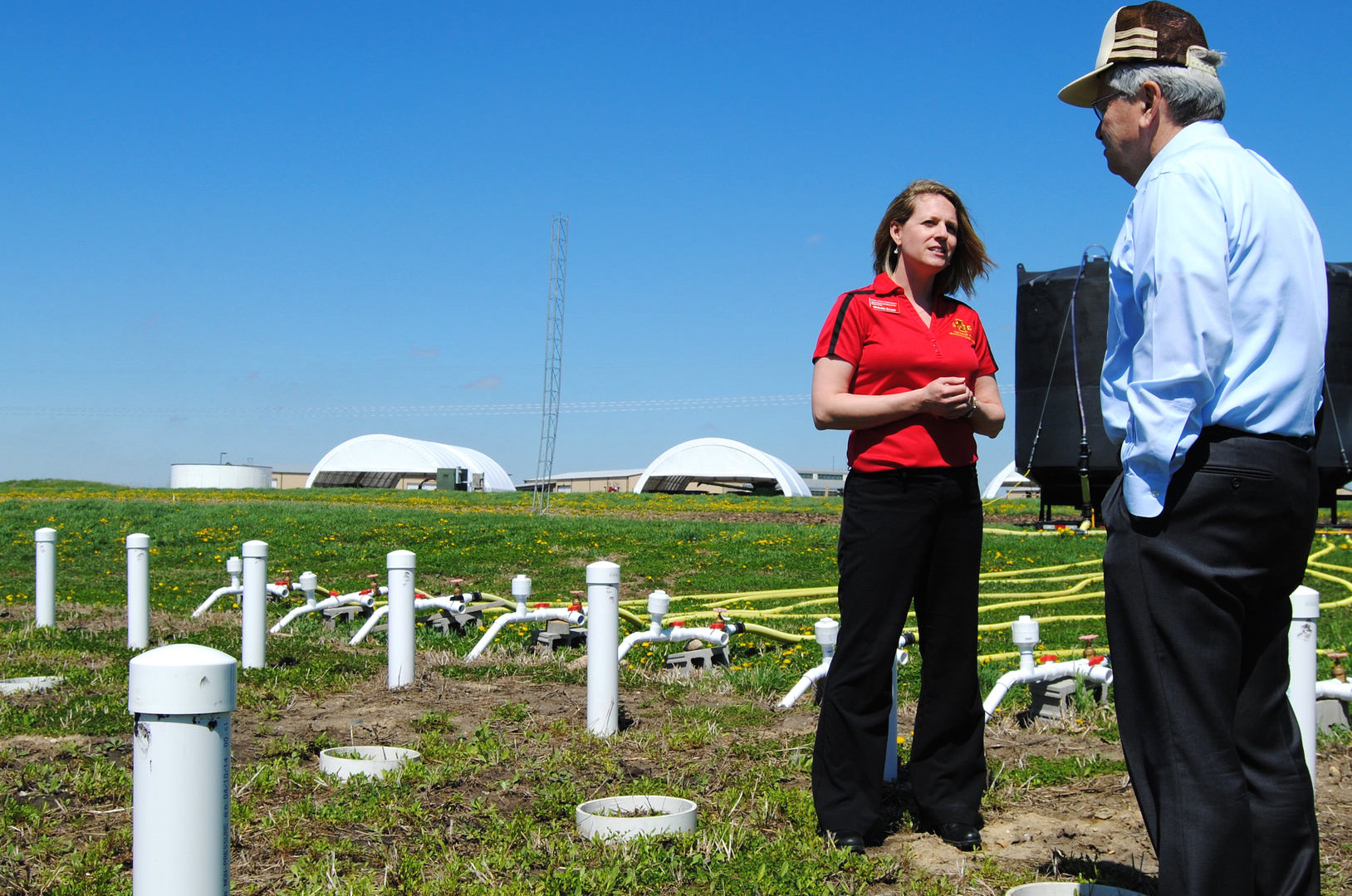 Last week, Gov. Terry Branstad visited Iowa Nutrient Research Center (INRC) field sites at the Iowa State University Ag Engineering/Agronomy Research and Demonstration Farm to sign a proclamation celebrating Soil and Water Conservation Week.
Last week, Gov. Terry Branstad visited Iowa Nutrient Research Center (INRC) field sites at the Iowa State University Ag Engineering/Agronomy Research and Demonstration Farm to sign a proclamation celebrating Soil and Water Conservation Week.
The governor and attendees were presented cover crop and bioreactor research at the farm. The Iowa Learning Farms’ Conservation Station served as a backdrop to the event.
Partnership was emphasized throughout the governor’s speech to continue successful conservation efforts. He stated that the proclamation signing was a way to celebrate the accomplishments of soil and water districts and their partnerships with research and extension programs at Iowa State.
“We’re looking to partner with a lot of different groups to make this [nutrient reduction strategy] happen. And that is why we are going out today and visiting Iowa State University and other watersheds to look at some of the practices that have been put into place and hopefully we can help educate the public in Iowa that these kinds of public and private partnerships are what make sense. We’ve seen a lot of changes over the years in learning how to better protect the water quality of our state, and we just want to build on that,” Branstad said.
John Lawrence, INRC director and ISU College of Agriculture and Life Sciences associate dean for extension and outreach, reiterated the idea of partnerships when highlighting that the INRC is a Regent’s center involving the three state universities. He stated that partnerships and collaborative research in conservation is needed in the ongoing effort to improve Iowa’s soil and water quality.
Mike Castellano, associate professor in agronomy, talked about his research on cover crops and explained that the field site is focused on understanding how to make cover crops more effective as a conservation tool. He also explained to the governor and attendees that cover crops have shown no negative effect on soybean yields.
Michelle Soupir, associate professor in agricultural and biosystems engineering, talked about her research on bioreactors and how she evaluates different management practices and materials within this edge–of-field conservation practice. She said this practice appeals to farmers interested in a low-maintenance conservation practice.
Iowa Learning Farms (ILF), a program composed of partnerships including Iowa State University Extension and Outreach, showed off its mobile conservation station. Jackie Comito, ILF program director, said the conservation station is a traveling educational tool used at schools and field days to call attention to the importance of improved water and soil quality through conservation farming practices.
The cover crops and bioreactor research is funded by the Iowa Nutrient Research Center. The center has funded 31 research projects conducted by scientists at Iowa State, University of Iowa and University of Northern Iowa since its establishment in 2013.
The center, administered by Iowa State, provides research and innovation to address Iowa’s water quality concerns. It supports research to evaluate the performance of current and emerging nutrient management practices, providing recommendations on implementing the practices and developing new practices.
Contacts:
John Lawrence, Agriculture and Natural Resources Extension, 515-294-7801, jdlaw@iastate.edu
Dana Woolley, Iowa Nutrient Research Center, 515-294-5905, dwoolley@iastate.edu
On the Web: This and all other Iowa State University College of Agriculture and Life Sciences news releases and related photos are available at http://www.cals.iastate.edu/news/
